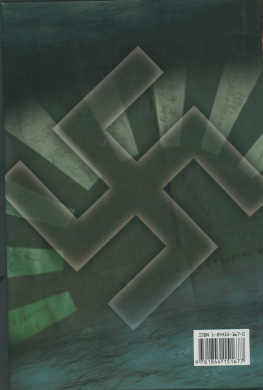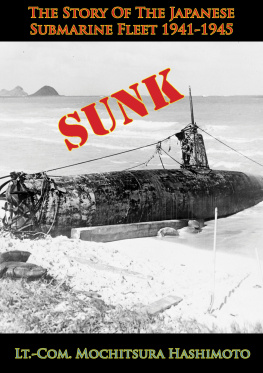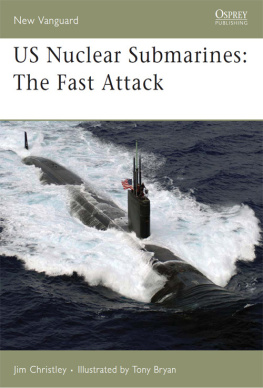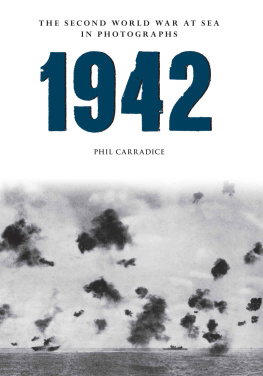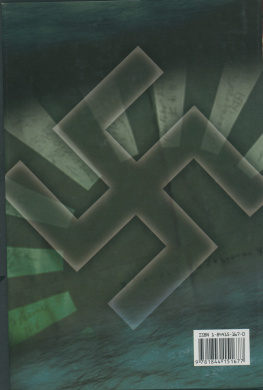Yanagi
Yanagi
The Secret Underwater Trade
Between Germany & Japan 19421945
by
Mark Felton

First published in Great Britain in 2005 by
Pen & Sword Maritime
an imprint of
Pen & Sword Books Ltd
47 Church Street
Barnsley
South Yorkshire
S70 2AS
Copyright Mark Felton, 2005
ISBN 1 84415 167 0
The right of Mark Felton to be identified as Author of this Work
has been asserted by him in accordance with the
Copyright, Designs and Patents Act 1988.
A CIP catalogue record for this book is
available from the British Library.
All rights reserved. No part of this book may be reproduced or
transmitted in any form or by any means, electronic or mechanical
including photocopying, recording or by any information storage
and retrieval system, without permission from the Publisher in
writing.
Typeset by Kirsten Barber,
Leeds, West Yorkshire
Printed and bound in England by
CPI UK
For a complete list of Pen & Sword titles please contact
PEN & SWORD BOOKS LIMITED
47 Church Street, Barnsley, South Yorkshire, S70 2AS, England
E-mail: enquiries@pen-and-sword.co.uk
Website: www.pen-and-sword.co.uk
To Fang Fang,
forever in my heart
Contents
The author would gratefully like to acknowledge the contributions and kind assistance of the following individuals and organizations without which this project could not have been completed. First, I would like to express my thanks to Brigadier Henry Wilson and all the staff at Pen & Sword Books for their patience, assistance and encouragement concerning my project, and for publishing the end result; many thanks to my editor, Kirsten Barber, for all her hard work and assistance in bringing this project to fruition; also to Jon Wilkinson for the jacket design.
I was assisted by a number of U-boat veterans throughout the research for this book, and I would like to thank Carl Evans for introducing me to Karl Kaiser, formerly of U-181; many thanks to Heinz Sandmuller, formerly of U-35 and U-234 for generously taking time to answer my questions, and to Arthur Baudzus, formerly of U-859, and author of a novel of the same name, for contacting me and assisting me in understanding life aboard a Far East-bound U-boat.
A great debt of thanks to Ted Agar for kindly giving me permission to reproduce photographs from his collection; many thanks to Paul Tidwell, who discovered the wreck of the Japanese submarine 1-52 in the Atlantic, for pointing me in some interesting research directions and answering my questions; many thanks also to Ken Dunn, Hubertus Weggelaar, Ed Dalder, Hans Mair, Fernando Almeida, Howard Cock, Mike Yared, J.T. McDaniel, and the superb Uboat.net, the finest website and database available on the subject; to Benjamin Felton for knowing instantly what I was talking about concerning U-boats, for the use of his excellent and growing U-boat book library and for introducing me to U-534 in Birkenhead where the seeds of this project first began to germinate; to Alex Crawford for filling in the blanks regarding the air battle over 1-29; and to Ben Mercer for kindly providing my author photograph.
I would like to thank the staff at the following institutions for their kind assistance: the National Archives at Kew; the Albert Sloman Library at the University of Essex; the Federal German Navy (Bundesmarine); and the British Library in London.
Finally I would like to thank my wife, Fang Fang, for her love, support and belief in me throughout this project; for all her practical and emotional support; for occasionally acting as an unpaid research assistant and sounding board, and for her infinite patience and encouragement.
The best way to gain even a cursory insight into the lives and conditions of service of the men of the U-boat arm of the Second World War German Navy is to spend an afternoon roaming around one of the preserved vessels to be found around the world. Although hardly any examples remain of the 1,171 U-boats of all types commissioned into the German Navy between 1935 and 1945, a little effort and travel can transport one back to the world of the Iron Coffins: a world of fetid air, bad food, and the constant tension of imminent attack. For those who want to experience for a fleeting moment the claustrophobic reality of life beneath the waves, U-boats have been preserved in Chicago and at the U-boat Memorial at Laboe in Germany. These boats are pristine museum pieces that have been altered to accommodate modern tourists. For a truly eerie experiment in time-travel, a visit to the hulk of U-534 in Birkenhead, near Liverpool, provides the uninitiated with an opportunity to experience the stark reality of service aboard a U-boat, and is testimony to the agonized deaths of hundreds of these machines at the hands of Allied air and sea power.
U-534, a Type IXC40 sunk in the Kattegat off Denmark in May 1945 and raised in 1996, is of the same general type and configuration as many of the U-boats discussed throughout this book, a workhorse of long-range hunting and transportation for the German Navy during the Second World War because of its large fuel capacity and extended range. Although U-534 has no immediate connection with the German operation of U-boats and transport links with the Indian Ocean and Far East, the configuration of the boat none the less recommends it to all as a memorial to courage, tenacity and desperation on the part of the men who crewed these tools of war. To stand in the forward torpedo room of U-534, with its insides ravaged by fifty years of contact with salt water, one can visualize the bunks that would have been slung next to the torpedoes suspended in their racks, the busy toing and froing of sixty plus teenagers and men, the smell of unwashed bodies and food on the turn, stumbling through each compartment filled to capacity with boxes and crates of every description everything permeated by grease, and the smell and taste of engine oil and lubricants. Now imagine, if you will, remaining confined within this steel tube for nearly 200 days, with no relief from the constant fear of attack from above and the unpleasant possibility of death by drowning or worse. It would often take some 200 days of living on ones nerves and a rudimentary diet, never seeing the sun or having the luxury of a wash in fresh water, before a U-boat would reach the steamy tropics, perhaps at Penang in Malaya or Surabaya in Java, completing incredible combat patrols whose purpose was both the interdiction of Allied commerce, and the delivery of secret military equipment and personnel to the Japanese. On arrival in the Far East the Germans could expect a brief respite from immediate death, the chance to repair the battered submarine, overhaul the diesel engines and batteries, and load up all available spaces with a cargo of raw materials bought off the Japanese, essential to the Nazi war effort back home.
For many of the men, the Indian Ocean was also to offer a happy killing ground for U-boats already driven from their traditional hunting grounds in the North Atlantic and North Sea by advances in Allied anti-submarine technology and convoy escorting prowess. Many U-boat skippers, often highly decorated individuals who had made their names in the Battle of the Atlantic, and who, more often than not, proudly wore the insignia of the Knights Cross (Nazi Germanys premier award for courageous service) around their necks, found another chance to prove their skills in a strategic backwater most of us do not associate with the U-boat war. The Japanese, for their part, although to use their submarine fleet very differently from the Germans, also prowled the Indian Ocean, and came as far as the North Atlantic to trade with Nazi Germany.

